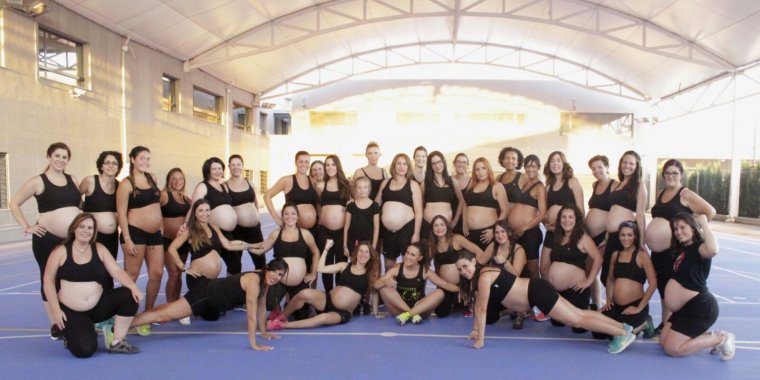| News / Science News |
A new study highlights the importance of undertaking physical activity of moderate–vigorous intensity during the early weeks of pregnancy
Pregnancy is a critical stage characterised by complex changes in endocrine and immunometabolic levels, during which the woman’s physiology is modulated to sustain her health and that of the baby. However, a malfunction in these mechanisms during the early stages of pregnancy may subsequently lead to complications and adverse consequences for foetal development and the future health of both mother and child.

Some of the pregnant women who participated in the project. Photo: Department of Physical and Sports Education, University of Granada
In view of this issue, in recent years a new field of research has evolved, focusing on the quest for strategies that enable pregnant women to better regulate and maintain these mechanisms during pregnancy, thus facilitating pregnancies with fewer complications.
Given the proven influence of lifestyle on the intrauterine environment, reducing the time spent by the mother on sedentary behaviours and increasing her physical activity levels may constitute alternative–complementary tools for controlling and regulating these immunometabolic responses and therefore promoting healthier pregnancies.
However, only a few studies have been conducted to date dealing with women during the early stages of pregnancy, and the results are ambiguous. Furthermore, this issue has never been explored in pregnant women with no severe metabolic disruptions.
Researchers from the University of Granada (UGR) have recently published a study, in which they analyse for the first time the link between sedentary time vs. objectively-measured physical activity levels and systemic concentrations of glycaemic, lipid, and inflammatory markers among women in the early stages of pregnancy (n= 50 pregnant women; 33 years of age; body mass index 24.2kg/m2; gestational stage 17 weeks).
The authors of this study observed that higher levels of physical activity at a moderate–vigorous intensity and complying with the specific physical activity recommendations for this population during the first weeks of pregnancy were associated with lower concentrations of interleukin 1β and interferon-γ and higher levels of interleukin 8.
That is, physical activity was linked to physiological markers related to inflammation, angiogenesis, metabolic regulation, and so on. However, the researchers did not identify any relationship between sedentary time or physical activity levels and glycaemic and lipid markers.
They concluded that spending more time conducting physical activity of moderate–vigorous intensity may help modulate these immunometabolic responses during the early stages of pregnancy in ‘healthy’ pregnant women.
Given the importance of maintaining an adequate balance of these mechanisms to promote more successful pregnancies, the results of the present study could be relevant to the clinical setting. (University of Granada)
YOU MAY ALSO LIKE





